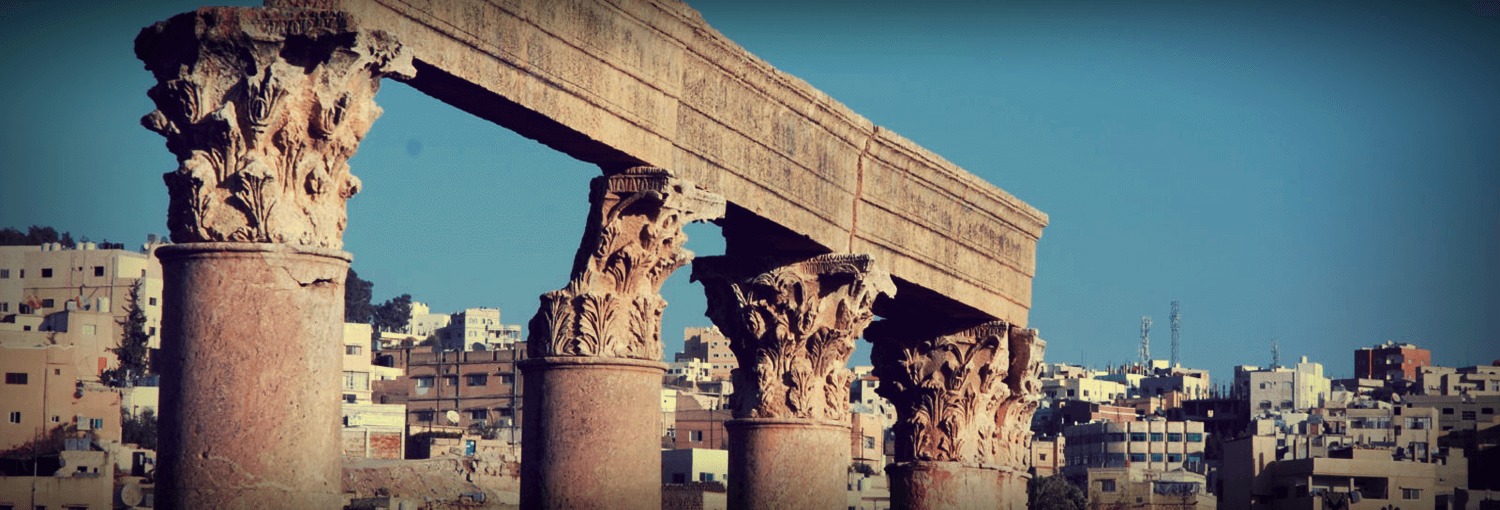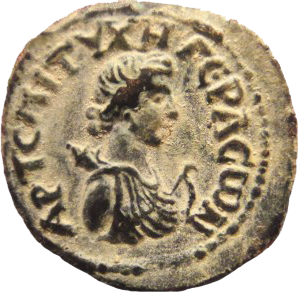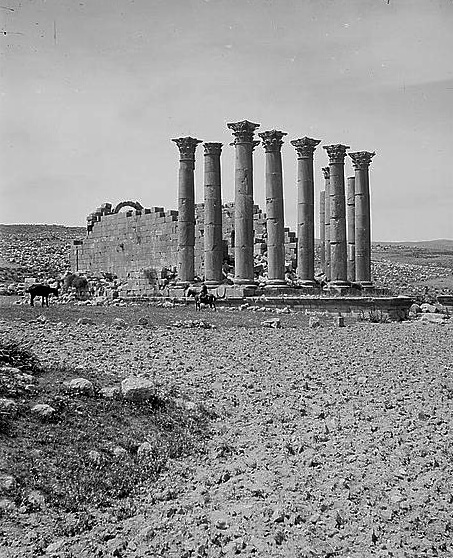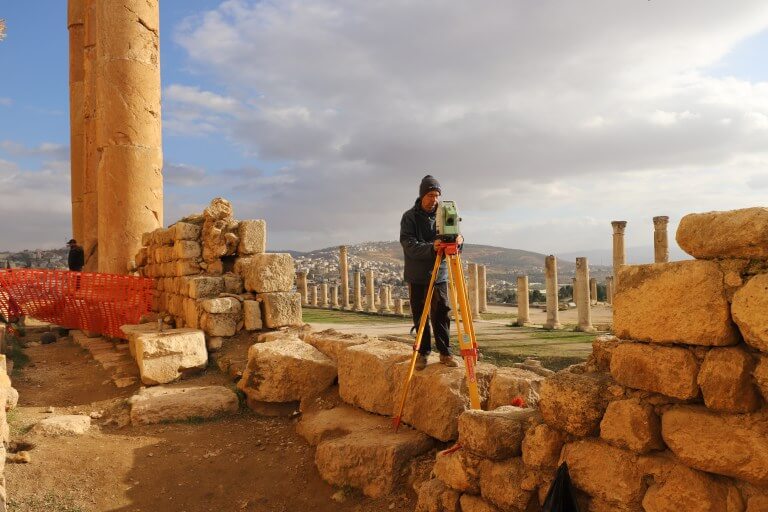
TEMPLE OF ARTEMIS 2018-2020
The Conservation of the 2nd Century Temple of Artemis at Jerash
Artemis of Jerash

Artemis of Gerasa” was a local goddess similar to the Greek Artemis. The goddess of the wilderness; Artemis ruled the boundaries between the wild and the civilized, presiding over the hunt and protecting children and young, as well as animals. The goddess of Gerasa is often depicted with the same attributes of the Greek Artemis, hunting with her bow and arrows, but her complex character is reflected by the use of local inscriptions and by her identification with a second Greek goddess, Tyche, as she was the protector of the city.
The Ancient Sanctuary
The Sanctuary of Artemis is a large complex found on the western bank of the river which runs through the modern and ancient city. It is one of the best-preserved sanctuaries of the Eastern Roman Empire and a magnificent example of Imperial Roman Roman architecture.
The sanctuary was built in the mid-2nd century AD, soon after the conflicts of the Bar Kokhba revolt which affected the Judaea Province and the surrounding regions. The existence of an older cult place of the goddess is documented by few inscriptions but the monumental evidence is limited to some clues in the lower part of the later sanctuary.
Gateway columns mark the entrance to the sanctuary along the main colonnaded street. A monumental stairway then led the worshippers to a lower U-shaped terrace whose western side held a second astounding stairway, crowned by a colonnade. Hence one could visit the upper terrace, an immense rectangular area with porticoes on the four sides, the temple in the middle and a tower-altar in front of it.
The temple is built on a high podium supported by vaults. Eleven Corinthian columns of the eastern side are still standing and are one of the most iconic landmarks of the ancient city. The inner cella was clad with polychrome marble slabs and roofed by a terrace reachable by worshippers through a complex system of staircases. A wide vaulted niche in the western side hosted the goddess’ statue, dominating the space of the cella. The colonnade of the temple was never finished and the cella itself was completed after several adjustments of the original design.
The Reuse of the Sanctuary
The deconsecrating of the sanctuary and its conversion to a secular use is first recorded at the beginning of the 5th century AD when the carved door frame and all the marble elements of the complex were removed and reused elsewhere. The sanctuary was repaved with mosaic and likely transformed into a public reception hall. The collapse of the original roof determined a further transformation and during the 6th century AD, the building was converted into a private residence, around which the facilities for different manufacturers, such as pottery, were set up. These activities severely decreased after an earthquake destroyed the city in the year 749 CE, but the temple was still used by local residents until the 12th-13th century, when a further earthquake made the use of the cella impossible.
Jerash Rediscovered

In 1806, a German traveler, Ulrich Jasper Seetzen, rediscovered the ancient city after visiting the area, at that time part of the Ottoman Empire, and identifing it as the ancient Gerasa. Later the first systematic studies of the site were by Gottlieb Schumacher at the beginning of the twentieth century. After the First World War, Jerash became part of theBritish Mandate in Transjordan under the care of the Palestine Department of Antiquities. Together with the first works of ‘clearing, repair and conservation’, a site-scale investigation was started in 1928 by the joint expedition of Yale University and the British School of Archaeology in Jerusalem that worked until 1934. In the sanctuary of Artemis, only the southern half of the upper terrace was systematically excavated, while the temple and the lower terrace were only subject to smaller trial trenches.
Conservation Efforts
After the Second World War and the creation of the Department of Antiquities of the Hashemite Kingdom of Jordan, an impressive program of restoration was carried out all over the site with the aim to improve the flow of tourism. In the sanctuary of Artemis, the two terraces were linked, unearthing and restoring a section of the upper staircase.
Since 1977, an Italian team of archaeologists, architects and conservators started new investigations in the area of the sanctuary and of the ‘Propylaea Church’ with the aim to study, record, and make the whole history of this extraordinary complex understandable for the public. In the first years, the mission investigated the two terraces of the sanctuary. Between 1984 and 1993, within a cooperative project with the Jordanian Department of Antiquities, the front of the sanctuary towards the colonnaded street, consisting of two rows of vaulted shops on either side of the entrance, was systematically excavated and restored, stopping the landslide of the hill. In 1995 and 1996 the cella of the temple and its western side were excavated. Since 1999 until 2008 the area of the ‘Propylaea Church’, between the bridge on the river and the colonnaded street, was extensively excavated.
More than twenty years after the excavation of the cella, symptoms of structural weakness were recorded in the temple and it has been partially closed to the public. There is a substantial risk of collapse of the vaults of the podium and of the doorframes of the corner-towers. Together with the integrity of the monument, the comprehension of its complex history is threatened. Hence the decision to design a new conservation project; which also provideded the opportunity for further international cooperation between the Italian team and the DoA. This project is a chance to further train conservators working for the Department of Antiquities, so that they may be able to carry out future conservation efforts independently and keep up with maintenance of the site.
This particular project started in November 2018 with the systematic investigation of the vaulted basement of the podium, where no previous excavations had ever been carried out. Excavations were necessary in order to proceed with the evaluation of the podium foundations, which were hidden by ancient and recent debris.
After the completion of the vaults excavation and cleaning the whole monument from weeds and rubble, the temple has been surveyed through digital photogrammetry and a high definition georeferenced 3D model. These provided the needed graphics support for the documentation of conservation efforts and digital static assessment.
In January 2019 a team of conservators, architects and archaeologists drafted the conservative assessment of the temple, first step for the design of the restoration works for the safety of the monument and its development.



Countries
